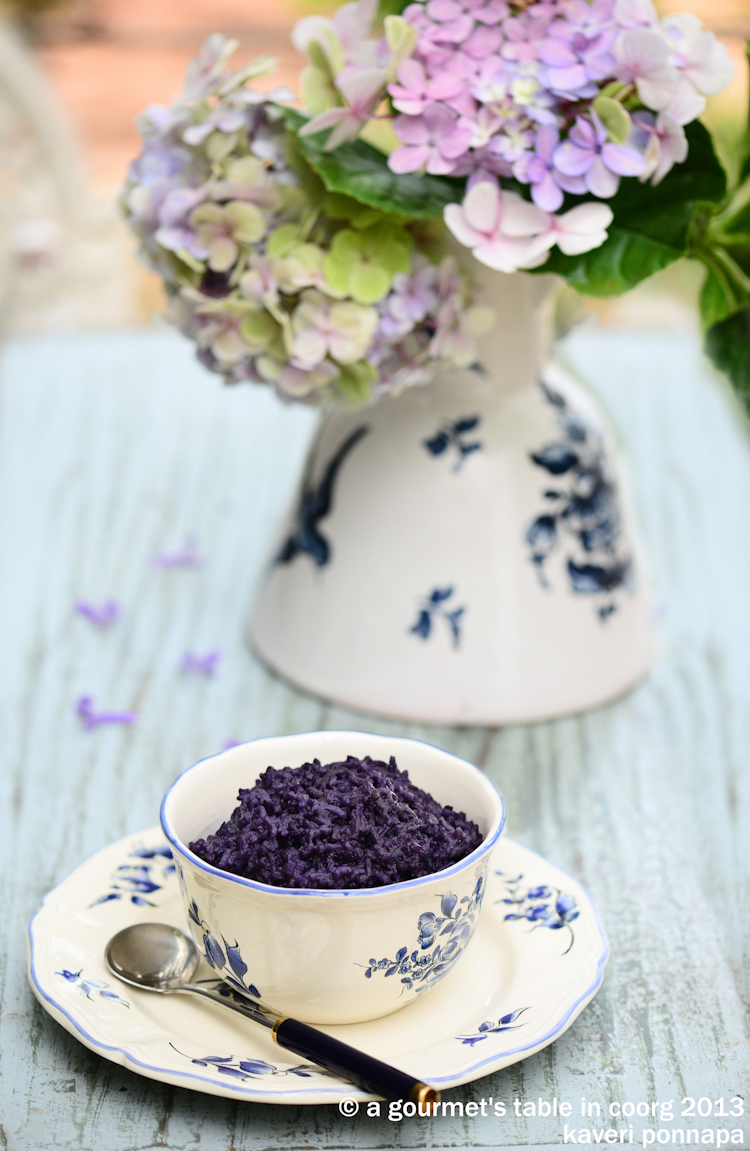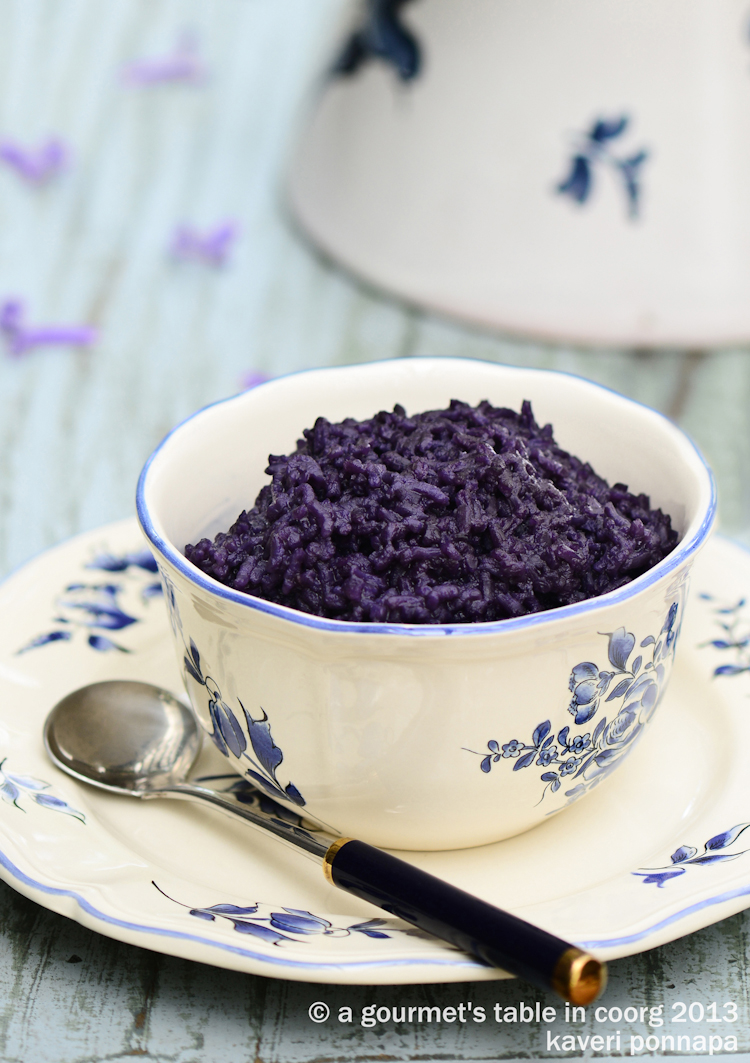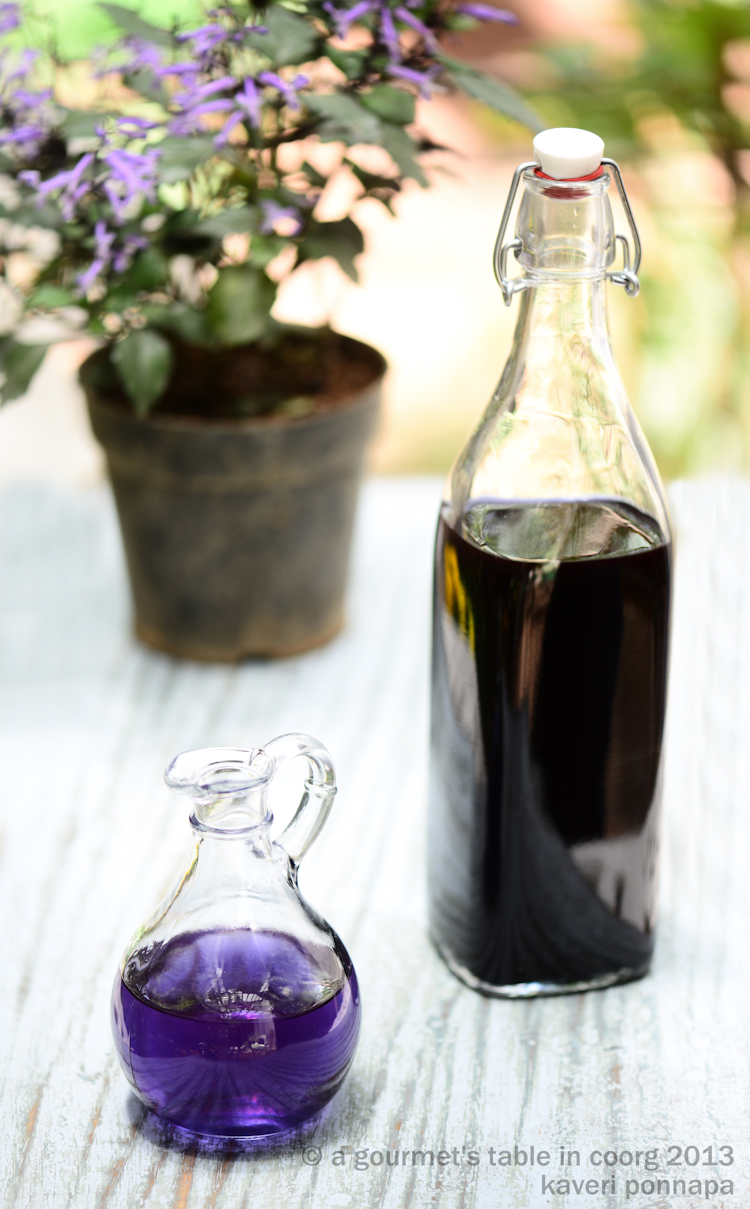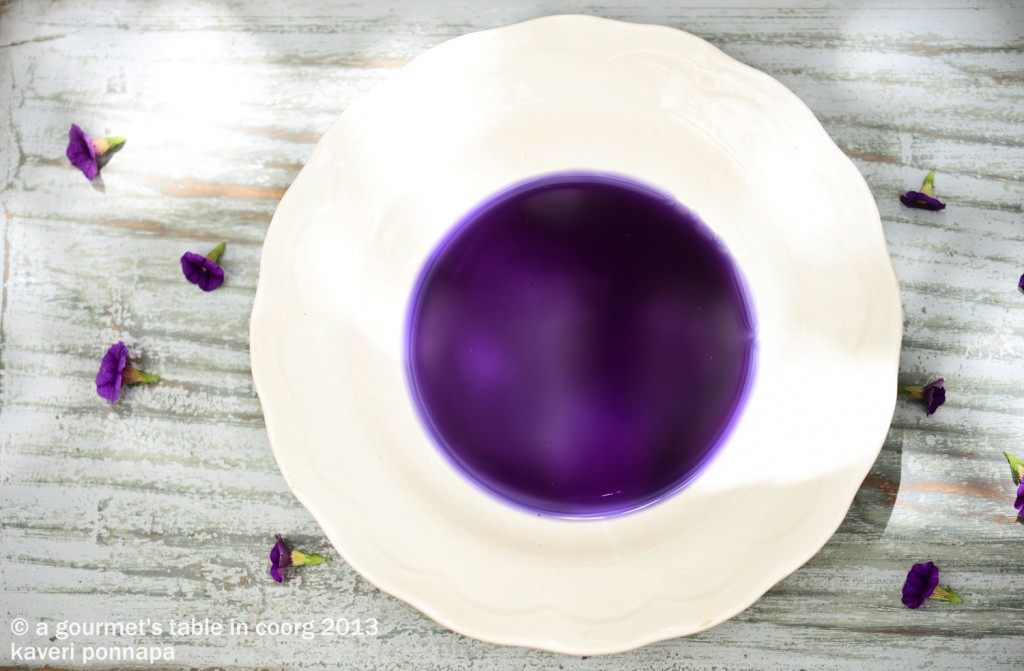Moody, melancholy landscapes, cold, rough weather, and unrelenting rain pounding on rooftops, the outline of the hills watered down under a wash of subdued blue –the beauty of the Coorg monsoon is not the obvious kind, but it is one that the Coorgs love and appreciate. As the rains build up, drowning the valleys from mid-July to mid-August, a period known as Kakkada, Justicia wynaadensis, a nondescript plant that grows wild on embankments and forests comes into its own. The rain-soaked earth fills its leaves with rare, medicinal properties for eighteen consecutive days, adding them one at a time, until, around the third of August, it reaches the peak of its powers. We call it madde thoppe, ‘the medicinal leaf’, its name almost synonymous with the mood of the Coorg monsoon, and it is highly prized for its special qualities. In a season when the weather throws down challenges every day, and there is plenty of demanding outdoor work, overseeing the transplanting of paddy seedlings, the hillsides offer us this exceptional protection against the harsh climate.
We pluck the fresh leaves from their crisp stalks, and bruise them by crushing them lightly between the fists. The woody parts of the stalks are discarded, but the tender portions can be used, although some people prefer to use only the leaves. This is then soaked overnight. The next day, when the leaves are placed over a fire to boil, an exotic, unusual fragrance invades the kitchen and the colour of the water begins to change, as the innocuous looking leaves suddenly begin to release their subtle qualities, staining the water violet, or indigo.This extract – deep, dark and potent – is cooked into a sweet payasa, or a puttu, and eaten to shore up defences against the rain that rages outside. Madde payasa or madde kool is a gentler version, cooked with coconut and sweetened with syrup made from jaggery. The more rustic way of cooking it is with garlic, ginger and peppercorns.
Madde puttu, a startling indigo, is more uncompromising. It is usually cooked unsweetened, and allowed to cool into solid cakes. Even the spoonfuls of sweet, Coorg honey and ghee cannot mask the intense, familiar, herbal flavours. Like the Coorg monsoon, a love for these rare flavours is an acquired taste.
Even though our lives are far removed from the traditional farming cycle of Coorg, we have not lost our taste for these precious monsoon treats, and every one of us waits for a bunch of leaves, or bottles of extract to arrive in our kitchens. Every year, some kind friend or other sends me armloads of madde thoppe, and I get busy in my kitchen, recreating the essence of many, past monsoons. The swirls of indigo and violet extract in the vessel are a visual treat, and the fragrance that rises from the vessel of boiling leaves releases waves of nostalgia, and memories. Madde kool is about unusual flavours, and with its combination of colour, scent and folklore, it evokes a whole season. When I place the first, velvety spoonful in my mouth, I always think, our ancestors could not have found a better way to beat the monsoon blues.
Thank you for visiting this page. If you read something that you enjoy, or see an image that you like, please take a moment to write a response. Do look out for the recipes of all the food featured here in my upcoming cookbook.
Image Credits: Nithin Sagi
All Food Styling: Kaveri Ponnapa





Love your recipes…also the way u present food….i started making coorg food a few years back, your have been a teacher for me since…..
It’s such an enriching experience to read your articles.
Hello Manjula, thank you very much for your appreciation, I hope that you’ll find much to enjoy on these pages. I always look forward to hearing from readers, so I hope you will write in now and then. Warm wishes.Kaveri
Never seen this gorgeous purple liquid/ leaf/ food. Absolutely fascinating. Just wondering what the fresh leaves look like or the plant itself, so that the next time I see it in the wild I will be able to pluck it, hide it and enjoy it – all on my own of course.
Hi Roshin, the leaves of Madde Thoppe are easy to recognize for those familiar with them. One sure way is to crush a leaf – it has a very distinctive scent. I’ll and share an image of the fresh leaves. In the meanwhile, you know where you can get to taste the payasa!
Dear Kaveri,
Thank you very much for the recipe. I prepared maddu koolu using Chiroti rave, ghee, cardamom, coconut, jaggery, which i could cut into pieces after spreading on a plate. But had i seen your recipe before i prepared, i would have followed your method. I was not knowing about overnight soaking etc. But i have preserved the extract, which i will prepare like your recipe. As i am residing in mysore, i get get this leaf either from my neighbour or through my cousins who are staying at Coorg.
Thank you,
Premalatha
Hello Premalatha, thanks for writing in. I’m sure your next round of madde payasa will turn out perfect, and it is really delicious. The method you described is normally made with soaked, ground rice, and it is called madde puttu. It can be made sweetened or unsweetened. It is a special dish, very intense in flavour.I will write about it sometime later, so do look out for the recipe, and try that out too. In the meantime, enjoy your madde payasa! Best wishes, Kaveri
We extracted the bluish purple coloured extract from madd thoppu but i would like to know if we want to store it for long time, how to keep it stable with its original colour?
Hello Nital, this is going to be a slightly long answer, so please bear with me! Madde thoppe gives colour and flavour right through the year. My mother-in-law has made it for me (because I am crazy about it!) in December, when we used to visit from overseas. But the period from mid-July to mid-August, known as Kakkada, is when it is filled with a concentration of medicinal qualities that makes it special. You have not mentioned which part of the year you made the extract. I have frozen containers of kakkada madde nir extract very successfully for up to 3-4 months in a deep freezer, with no change in colour or flavour, saving them for my children when they were away at boarding school. I have also tried keeping bottles in the fridge, with very mixed results – some batches remained fresh and did not change colour for a year, while others separated into two layers of colour and water, which I had to throw away. By far, freezing is most reliable, but not for any length of time. I do all this only because I do not have access to a regular supply of Madde thoppe. If you can have it fresh, that is what I recommend, as I believe it was never meant to be stored, but enjoyed at the peak of the season. Best wishes, Kaveri.
In Udupi ,Mangalore we use different plant’s skin called Paala in this month to prepare a kashaya a soup extracted from this tree. it is believed that on this perticular ( Amavaasya) day it has got rich medicinal value.
Thank you for sharing this information.I would love to learn more about the kashaya—will ask a few friends from the region.
Best wishes.
Kaveri
While reading the beautifully written descriptions of Coorg and its tasty cuisine by Kaveri Ponnapa it just feels as if I were in Coorg myself, tasting all the delicious flavours and being sourrounded by the scenic beauty of the Coorg landscape ………..
Hello Philipp, thanks very much for writing in. I’m really glad that you enjoy reading about Coorg and its cuisine, and I hope that you will visit it one day,it is beautiful.